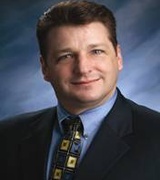Gary A Peck
age ~67
from Portland, OR
- Also known as:
-
- Gary A Eck
- Gary A Pack
Gary Peck Phones & Addresses
- Portland, OR
- Brooklyn, NY
- 21200 Wyndham Hill Ct, Tualatin, OR 97062 • (503)6380414
- Summit, NJ
- West Linn, OR
- Nehalem, OR
Work
-
Company:S group inc
-
Address:213 Sw Ash St Ste 209, Portland, OR 97204
-
Phones:(503)3280160
-
Position:President
-
Industries:Business Services
Images
Specialities
Buyer's Agent • Listing Agent
Isbn (Books And Publications)

Real Estate Brokers

Gary Peck
view sourceSpecialties:
Buyer's Agent
Listing Agent
Listing Agent
License Records
Gary L Peck
License #:
300729 - Active
Category:
EMS Licensing
Issued Date:
Dec 15, 2016
Expiration Date:
Jun 30, 2018
Type:
EMT-Basic
Name / Title
Company / Classification
Phones & Addresses
President
S Group Inc
Business Services
Business Services
213 Sw Ash St Ste 209, Portland, OR 97204
Manager
Raleigh Hills Pub
Eating Places
Eating Places
4495 Sw Scholls Ferry Rd, Portland, OR 97225
Website: mcmenamins.com
Website: mcmenamins.com
President
THE S GROUP INTERNATIONAL, LLC
Business Services
Business Services
121 SW Salmon St STE 1000, Portland, OR 97204
621 SW Alder St #900, Portland, OR 97205
1211 SW 5 Ave STE 1900, Portland, OR 97204
308 SW 1 Ave, Portland, OR 97204
(503)3280160
621 SW Alder St #900, Portland, OR 97205
1211 SW 5 Ave STE 1900, Portland, OR 97204
308 SW 1 Ave, Portland, OR 97204
(503)3280160
President
The S Group
All Other Personal Services
All Other Personal Services
213 SW Ash St, Portland, OR 97204
(503)3280160
(503)3280160
Manager
Raleigh Hills Pub
Full-Service Restaurants
Full-Service Restaurants
4495 SW Scholls Fry Rd, Portland, OR 97225
(503)2921723, (503)2919884
(503)2921723, (503)2919884
GE PECK, LLC
RIVER RIDGE EQUITY MANAGEMENT, LTD
GARY MARK ENTERPRISES, INC
Us Patents
-
Methods For Camera Movement Compensation
view source -
US Patent:20210227103, Jul 22, 2021
-
Filed:Apr 2, 2021
-
Appl. No.:17/221745
-
Inventors:- Santa Clara CA, US
Gary Peck - Portland OR, US
Bryan Ransil - San Francisco CA, US -
International Classification:H04N 5/14
H04N 5/232
H04N 5/33 -
Abstract:A method, system, apparatus, and/or device for adjusting or removing frames in a set of frames. The method, system, apparatus, and/or device may include: associating a first frame of a set of frames with motion data that is captured approximately contemporaneously with the first frame; when a sampling rate of the motion data is greater than a frame rate of the set of frames, aggregating a first sample of the motion data captured at the first frame and a second sample of the motion data captured between the first frame and a second frame of the set of frames to obtain a movement value; when the movement value does not exceed a first threshold value, accepting the first frame from the set of frames; and when the movement value exceeds the first threshold value, rejecting the first frame from the set of frames.
-
Methods For Camera Movement Compensation
view source -
US Patent:20190364175, Nov 28, 2019
-
Filed:Jul 16, 2019
-
Appl. No.:16/512650
-
Inventors:- Santa Clara CA, US
Gary Peck - Portland OR, US
Brayn Ransil - San Francisco CA, US -
International Classification:H04N 5/14
H04N 5/33
H04N 5/232 -
Abstract:A method, system, apparatus, and/or device for adjusting or removing frames in a set of frames. The method, system, apparatus, and/or device may include: associating a first frame of a set of frames with motion data that is captured approximately contemporaneously with the first frame; when a sampling rate of the motion data is greater than a frame rate of the set of frames, aggregating a first sample of the motion data captured at the first frame and a second sample of the motion data captured between the first frame and a second frame of the set of frames to obtain a movement value; when the movement value does not exceed a first threshold value, accepting the first frame from the set of frames; and when the movement value exceeds the first threshold value, rejecting the first frame from the set of frames.
-
Methods And Systems For Multiple Access To A Single Hardware Data Stream
view source -
US Patent:20190324827, Oct 24, 2019
-
Filed:Apr 24, 2019
-
Appl. No.:16/393436
-
Inventors:Ryan Fink - Vancouver WA, US
Ryan Phelps - Portland OR, US
Gary Peck - Portland OR, US
Bryan Ransil - San Francisco CA, US -
International Classification:G06F 9/54
-
Abstract:Methods for providing simultaneous access to a hardware data stream to multiple applications are disclosed. The first application to access a hardware device is responsible for providing and publishing an application programming interface (API) that provides access to the hardware device's data stream, which other applications can then call to gain access to the data stream. In some examples, the first application may be a server process or daemon dedicated to managing the hardware device data stream and publishing the API. In some further examples, the first application may instead may carry out user functionality unrelated to managing the hardware device.
-
Methods For Camera Movement Compensation
view source -
US Patent:20190037112, Jan 31, 2019
-
Filed:Sep 28, 2018
-
Appl. No.:16/146334
-
Inventors:- Mountain View CA, US
Gary Peck - Portland OR, US
Bryan Ransil - San Francisco CA, US -
International Classification:H04N 5/14
H04N 5/33
H04N 5/232 -
Abstract:A method, system, apparatus, and/or device for adjusting or removing frames in a set of frames. The method, system, apparatus, and/or device may include: associating a first frame of a set of frames with motion data that is captured approximately contemporaneously with the first frame; when a sampling rate of the motion data is greater than a frame rate of the set of frames, aggregating a first sample of the motion data captured at the first frame and a second sample of the motion data captured between the first frame and a second frame of the set of frames to obtain a movement value; when the movement value does not exceed a first threshold value, accepting the first frame from the set of frames; and when the movement value exceeds the first threshold value, rejecting the first frame from the set of frames.
-
Systems And Metohds Of Gesture Recognition
view source -
US Patent:20170316261, Nov 2, 2017
-
Filed:Jul 11, 2017
-
Appl. No.:15/646555
-
Inventors:Ryan Fink - Vancouver WA, US
Ryan Phelps - Portland OR, US
Gary Peck - Portland OR, US -
International Classification:G06K 9/00
G06F 3/01
G06F 1/16
G06F 3/01
G06F 3/03 -
Abstract:Disclosed methods include a method of controlling a computing device includes the steps of detecting a gesture made by a human user, identifying the gesture, and executing a computer command. The gesture may comprise a change in depth of a body part of the human user relative to the 2D camera. The gesture may be detected via a 2D camera in electronic communication with the computing device. Disclosed systems include a 2D camera and a computing device in electronic communication therewith. The 2D camera is configured to capture at least a first and second image of a body part of a human user. The computing device is configured to recognize at least a first object in the first image and a second object in the second image, identify a change in depth, and execute a command in response to the change in depth.
-
Methods For Camera Movement Compensation For Gesture Detection And Object Recognition
view source -
US Patent:20160048216, Feb 18, 2016
-
Filed:Jul 23, 2015
-
Appl. No.:14/806926
-
Inventors:Ryan Fink - Vancouver WA, US
Gary Peck - Portland OR, US
Bryan Ransil - San Francisco CA, US -
International Classification:G06F 3/01
G06F 3/03 -
Abstract:Methods and systems for camera, movement compensation for gesture detection and object recognition. In some examples, the methods and systems analyze motion data associated with the sequential frames of a video stream, and reject those frames where the detected camera movement exceeds a predetermined threshold. In other examples, the methods and systems use motion data and portions of immediate previous frames to adjust a frame where the detected camera movement exceeds the predetermined threshold to create an adjusted frame that compensates for the detected camera movement. In still other examples, frames are adjusted if the detected motion exceeds a first threshold, and rejected if the detected motion exceeds a second, higher threshold.
-
Gesture Recognition Systems And Devices
view source -
US Patent:20160011669, Jan 14, 2016
-
Filed:Jul 1, 2015
-
Appl. No.:14/789788
-
Inventors:Ryan Fink - Vancouver WA, US
Ryan Phelps - Portland OR, US
Gary Peck - Portland OR, US -
International Classification:G06F 3/01
-
Abstract:Gesture recognition systems for detecting gesture commands in light conditions and in dark conditions including a computing system having a processor and a thermographic camera configured to detect infrared radiation from a gesture made by a user and communicate gesture image information to the processor for carrying out a computer-readable gesture command are shown and described. In some examples, the computing system and the thermographic camera are supported on an eyewear article frame. In some other examples, the computing system and the thermographic camera are components of a mobile device. In even other examples, the computing system and the thermographic camera are components of a desk top computer or a laptop computer.
-
Systems And Methods Of Gesture Recognition
view source -
US Patent:20160012281, Jan 14, 2016
-
Filed:Jul 10, 2015
-
Appl. No.:14/796944
-
Inventors:Ryan Fink - Vancouver WA, US
Ryan Phelps - Portland OR, US
Gary Peck - Portland OR, US -
International Classification:G06K 9/00
G06T 15/20
G06T 7/00
G06F 3/01
G06F 3/00 -
Abstract:Disclosed methods include a method of controlling a computing device includes the steps of detecting a gesture made by a human user, identifying the gesture, and executing a computer command. The gesture may comprise a change in depth of a body part of the human user relative to the 2D camera. The gesture may be detected via a 2D camera in electronic communication with the computing device. Disclosed systems include a 2D camera and a computing device in electronic communication therewith. The 2D camera is configured to capture at least a first and second image of a body part of a human user. The computing device is configured to recognize at least a first object in the first image and a second object in the second image, identify a change in depth, and execute a command in response to the change in depth.
Vehicle Records
-
Gary Peck
view source -
Address:21200 SW Wyndham Hl Ct, Tualatin, OR 97062
-
Phone:(503)6380414
-
VIN:SALSK2D4XCA719694
-
Make:LAND ROVER
-
Model:RANGE ROVER SPORT
-
Year:2012
-
Gary Peck
view source -
Address:10850 NW Appellate Way, Portland, OR 97229
-
Phone:(503)3148004
-
VIN:JHLRE38767C010877
-
Make:HONDA
-
Model:CR-V
-
Year:2007
Medicine Doctors

Gary L. Peck
view sourceSpecialties:
Dermatology
Work:
Tamjidi Skin Institute
5454 Wisconsin Ave STE 1045, Chevy Chase, MD 20815
(301)6524828 (phone), (301)6522070 (fax)
5454 Wisconsin Ave STE 1045, Chevy Chase, MD 20815
(301)6524828 (phone), (301)6522070 (fax)
Education:
Medical School
University of Michigan Medical School
Graduated: 1962
University of Michigan Medical School
Graduated: 1962
Procedures:
Destruction of Benign/Premalignant Skin Lesions
Destruction of Skin Lesions
Skin Surgery
Destruction of Skin Lesions
Skin Surgery
Conditions:
Tinea Pedis
Acne
Alopecia Areata
Atopic Dermatitis
Contact Dermatitis
Acne
Alopecia Areata
Atopic Dermatitis
Contact Dermatitis
Languages:
English
Spanish
Spanish
Description:
Dr. Peck graduated from the University of Michigan Medical School in 1962. He works in Chevy Chase, MD and specializes in Dermatology. Dr. Peck is affiliated with Medstar Washington Hospital Center and Suburban Hospital.

Gary Quinton Peck
view sourceSpecialties:
Pediatrics
Education:
Louisiana State University at New Orleans

Gary R. Peck
view source
Gary Don Peck
view source
Gary Peck
view source
Gary Peck
view source
Gary Peck
view source
Gary Peck
view source
Gary Peck
view source
Gary Peck
view sourceYoutube
Classmates

Gary Peck
view sourceSchools:
South Hagerstown High School Hagerstown MD 1989-1993

Gary Peck
view sourceSchools:
Huntley Hills Elementary School Chamblee GA 1993-1997
Community:
Steven Palmer, Sheryl Thomas, Dave Yenerall, Johnny Malone

Gary Peck
view sourceSchools:
Our Lady of the Snows School Reno NV 1954-1958
Community:
John Dalton, Bill Rainey

Gary Peck
view sourceSchools:
Westfield High School Westfield NY 1966-1970
Community:
Daniel Yeaney, George Beck, Robert Dimaio

Gary Peck
view sourceSchools:
San Dieguito High School Encinitas CA 1970-1974
Community:
Donna Proctor

Gary Peck
view sourceSchools:
McConnellsburg High School Mcconnellsburg PA 1968-1972
Community:
Mary Saurman

Gary Peck
view sourceSchools:
Federal Hocking High School Stewart OH 1984-1988
Community:
Tony Dodd, Grady Ness

Gary Peck
view sourceSchools:
Dunedin Elementary School Dunedin FL 1964-1969, Dunedin Highland Junior High School Dunedin FL 1969-1972
Community:
Toni Morgan
News

Program tries to catch PTSD vets in college
view source- The three-year Outside the Wire pilot program is in place at Santa Monica College, Long Beach City College and the Los Alamitos Joint Force Reserve Training Base in Orange County. Psychologist Adamson and Gary Peck of US Vets are working to get it established at LA City College.
- Date: Jul 25, 2011
- Category: Health
- Source: Google
Myspace
Flickr
Googleplus

Gary Peck
Work:
Ben Franklin Store and Pharmacy - Pharmacist (1980)
Education:
University of Pittsburgh School of Pharmacy - Pharmacy
About:
Reared in Houtzdale, PA. Moshannon Valley High SchoolUniversity of Pittsburgh, School of PharmacyOver 40 years as a PharmacistEnjoy Life
Tagline:
There are 3 types of days - Good, Better and Best
Bragging Rights:
I know Generra and Garin

Gary Peck
Work:
Pecks Motorsports - Tire Worker and Racer
Education:
Vanguard High School, Nascar Tech. - Auto
Tagline:
Falcon Racing, G.P.R Chassis, G.P.R Engines.

Gary Peck
Work:
Hewlett Packard (1980-1990)
Education:
University of california riverside, Palmdale high school

Gary Peck
Work:
Walt Disney World Resort
Education:
Niceville Senior HS

Gary Peck

Gary Peck

Gary Peck

Gary Peck
Get Report for Gary A Peck from Portland, OR, age ~67













